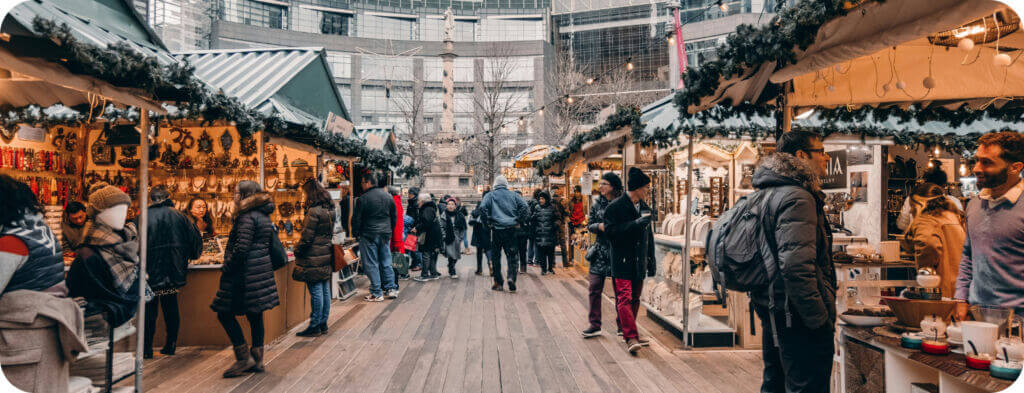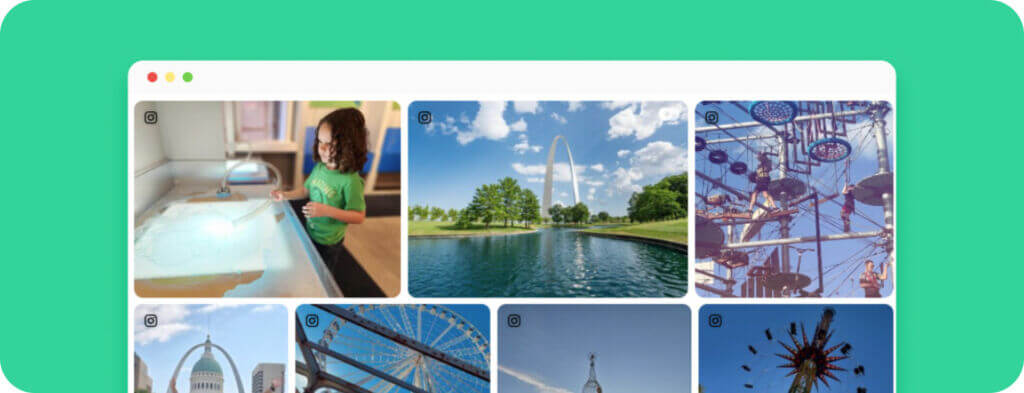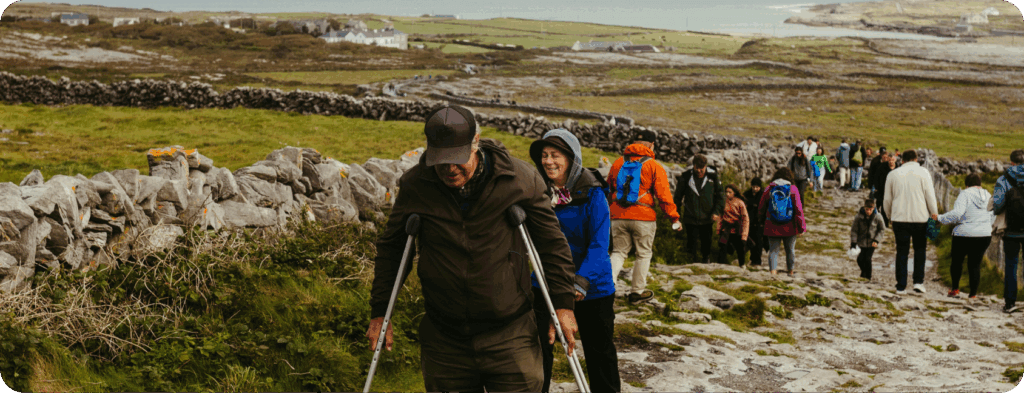
We’ve been keeping a close eye on the latest Instagram changes, and this one’s a biggie. Meta’s decision to index public posts isn’t just another update to scroll past—it’s a complete shift in how travelers are discovering destinations.
Instagram isn’t just for real-time inspiration anymore. It’s become a tool for long-term discovery, building authority, and helping AI understand what your destination is all about.
To make the most of it, destination marketers have to rethink their approach. Social and search can’t live in separate silos; now’s the time to sync them up and build a strategy that works for both travelers and algorithms.
Not sure what this means for your DMO? Don’t worry, we’ve got you.
Why Instagram Matters More Than Ever
Instagram is where visual storytelling lives, and now it’s also where search begins. With public posts being indexed by Google, every piece of content has the potential to reach travelers who are actively planning their next trip.
This change connects three powerful forces:
✨ Instagram’s visual inspiration
🤖 AI-powered search and discovery
📸 The authenticity of UGC and creators
When used strategically, Instagram content can establish your destination as a credible, engaging source of information that search engines and AI assistants trust to answer traveler questions.
Treat Every Instagram Post Like a Mini-Landing Page
Gone are the days when your Instagram posts disappeared after 24 hours or a few scrolls. Every post now has staying power—and search potential.
Think of each one like a mini landing page for your destination. Here’s how to give them more weight and reach:
➡️ Optimize your profile for discovery. Your handle, display name, and bio are now searchable by Google. Be clear, keyword-rich, and specific about what your destination is known for.
➡️ Master the SEO-friendly caption. Think like a traveler searching on Google. The first 125 characters of your caption function like a title tag. Make it count. For example:
- “3 Days in [City]: The Ultimate Itinerary for First-Time Visitors”
- “The 5 Best Family-Friendly Hikes in [Region]”
➡️ Use on-screen text in Reels. Google can read the text you add to videos. Use that space to reinforce your message with helpful keywords. Bonus: It boosts accessibility, too.
➡️ Write descriptive alt-text. Alt-text isn’t just for accessibility; it also lets search engines know what your visuals are showing. Describe your images clearly and with intent.
➡️ Refine your hashtag strategy. Skip the generic hashtags. Instead, focus on intent-based tags that reflect real search behavior, like #coffeein[city], #datenight[region], or #[destination]artscene.
Become a Trusted Source for Gemini and AI Overviews
AI tools like Google’s Gemini and its new AI Overviews aren’t just scanning the web; they’re choosing sources they trust to answer real questions. You want to be one of those sources.
Here’s how to build that trust:
🔍 Create content that answers real questions. Turn the questions that travelers are asking into the foundation of your content calendar. Position your brand as the go-to source to answer their questions like: “When’s the best time to visit?” or “Where are the best free things to do?”
👥 Embrace the credibility economy. Authentic content from real travelers and locals signals trust to AI. Curate and feature their posts, and don’t forget to optimize them for searchability. It’s not just engaging, it’s a good strategy.
🔄 Take a holistic approach to content. We know many DMO teams wear a lot of hats. You might be the social media manager, SEO lead, and PR rep all rolled into one. That’s why it’s more important than ever to create content with a big-picture mindset.
Instead of treating channels as separate to-do lists, look for opportunities to connect the dots:
- Use keyword insights to shape your Instagram captions
- Turn a popular social post into a blog or newsletter
- Repurpose a media spotlight into an Instagram Reel or Story series
Thinking holistically helps you get more mileage out of every piece of content, saves time, and ensures your message is consistent across channels. It’s not about doing more—it’s about working smarter with what you’ve already got.
Your 5-Step Action Plan
We know many destination marketing teams are likely juggling multiple roles, and “build Instagram SEO strategy” might sound like a big ask. But it doesn’t have to be overwhelming. These small, doable steps can go a long way in strengthening your digital footprint and making your content work smarter, not harder.
1. Audit & Optimize
Start with a quick win. Review your Instagram bio and your top 5 to 10 posts from the past year. Update your captions to reflect what travelers might actually be searching for on Google. Add detailed alt-text to your images to help both search engines and screen readers understand what’s in the frame.
Over 80% of travelers begin trip planning with a Google search (World Tourism Forum Institute). Optimizing your posts with real search intent in mind helps your content show up when it counts.
2. Pick 3–5 Searchable Themes
You don’t need to cover everything. Choose 3 to 5 themes or traveler questions you want your destination to be known for this quarter, like: “best hikes,” “local food spots,” or “family-friendly activities.”
Use those themes to guide your content across Instagram, your website, and blog. A consistent focus helps you rank better in search and makes it easier for travelers (and AI) to understand what your destination is all about.
3. Work Value-First Content into Your Calendar
Travelers aren’t just scrolling for inspiration, they’re using Instagram to plan. In fact, 41% of travelers use platforms like Instagram and TikTok to find places to go (MarketingDive).
That’s why at least 30% of your content should answer real traveler questions. These posts help your destination show up in search and build trust with both people and AI. Some examples could be:
- “How to Spend a Weekend in [Your Town]”
- “Best Coffee Shops for Remote Work in [Your Destination]”
- “Free Things to Do This Summer in [Region]”
Value-first content boosts discoverability and saves time for your audience. Start by repurposing FAQs, blog posts, or common visitor questions into bite-sized, helpful content that’s easy to share and save.
4. Measure What Matters
Likes and comments only tell part of the story. If you really want to know what’s working, start tracking metrics that reflect discovery, relevance, and reach.
Focus on signals that actually move the needle:
- Saves and shares: These tell the algorithm your content is useful, not just pretty. The more people save and share, the more likely your post will show up in search and recommendations.
- External traffic: Check Instagram Insights to see how many profile visits or post views are coming from outside Instagram. That means your content is being found through search—yes, even Google.
- Link clicks: If you’re directing people to your website, itineraries, or blogs, track how many clicks you’re getting. This helps show which posts are actually driving action.
- Keyword visibility: Use Google Search Console to see what search terms your site (and content) is ranking for. If you’re optimizing Instagram captions and alt-text with intent, this is where you’ll start seeing results.
💡 Pro tip: Posts with higher engagement—especially saves, shares, and clicks—are more likely to rank in both Google search results and within social algorithms (DashClicks).
These insights tell you if your content is showing up where and when people are actively planning their travel, not just entertaining them in the moment. Keep your eye on what drives real discovery and decision-making.
5. Empower Your Local Partners
You don’t have to do this alone. Your destination is made up of incredible restaurants, tour operators, museums, and shops that are all creating content too.
Send out a simple, one-page guide with Instagram tips (like using alt-text, keywords, and geo-tags). When their content is optimized, your destination gets broader exposure and more search-friendly content on the web.
TLDR: Why This Matters
Instagram isn’t just a place to inspire anymore, it’s a discovery engine influencing search rankings and AI-generated recommendations.
Here’s the cheat sheet:
✅ Treat every post like a long-lasting content asset
✅ Optimize captions, alt-text, and hashtags with intent
✅ Partner with local creators to share authentic, insider stories
✅ Tap into user-generated content to spotlight real experiences
✅ Track what actually moves the needle, not just likes and comments
Leaning into this now means your destination shows up not just in social scrolls, but in search results and AI-powered planning tools. Let your content work harder, last longer, and reach farther.











